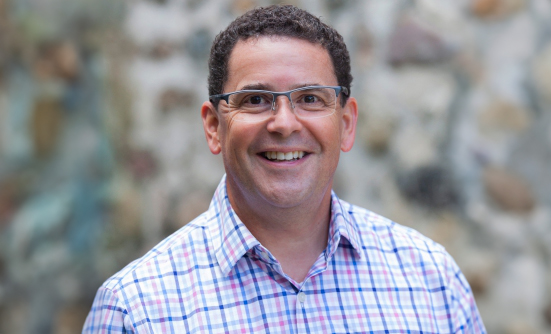You just heard the words, “you have cancer,” and what follows is a complex storm of thoughts and feelings that can hinder effective decision-making and generate fear regarding how the diagnosis will impact your overall sense of well-being. For many people newly diagnosed with cancer, thoughts quickly move to, How will this diagnosis affect me and my family financially? Fear of the financial unknown, treatment affordability, and financial survivability are unfortunately all too common experiences in the oncology setting.1
In recent years there have been significant advances in the treatment of cancer. New treatment options, such as targeted monoclonal antibodies and immunotherapies, are showing great results in extending the lives of people diagnosed with advanced-stage disease. But these advances have come with a high price tag.2 In 2013, an estimated $115 billion was spent on healthcare related to cancer. By 2030, this will more than double to an expected annual cost of $246 billion.
These costs are increasingly being transferred to patients through increased health insurance premiums, co-pays, deductibles, and out-of-pocket responsibilities. In addition, most patients undergo multiple treatment modalities, such as surgery, pharmaceutical interventions, and radiation treatments, that not only increase the cost of care but often limit their ability to maintain their prediagnosis income stream. The direct medical costs, in combination with the many indirect costs of cancer, such as loss of income, travel expenses, parking, and increased nutrition costs, contribute to financial barriers to care.
Common Financial Barriers to Care
As a financial navigator, the most common financial barriers I see are high-deductible/out-of-pocket insurance plans; decrease of income due to loss of full- or part-time employment; increased expenses such as travel, nutrition, and medical treatments; confusion about health insurance coverage; and the negative psychological response and social stigma to being in financial distress. You can address these barriers by actively participating in treatment cost discussions and involving a well-trained financial navigator working within the oncology department.

Treating financial distress will depend on the type of cancer, your treatment plan, your current insurance coverage, and your current income. For most people dealing with a cancer diagnosis there are ways to decrease your cost through 3 distinct methods: (1) utilizing internal or hospital-based resources, (2) utilizing external resources, and (3) optimizing your insurance coverage. Let’s discuss each of these approaches.
Optimizing Internal or Hospital-Based Resources
Most hospital-based oncology providers have programs in place to help reduce the financial burden for those who are in a lower-income bracket.
Some providers have transportation and food resources readily available for those who ask for assistance. Most hospital-based providers also offer financial assistance to help cover the out-of-pocket responsibilities you may have. Federal regulations require that nonprofit hospitals provide charity care and other community benefits for patients who meet their financial criteria. At some nonprofit healthcare settings, more than half of patients with cancer would qualify for some level of assistance. You just need to ask. Be proactive and ask if you qualify for assistance. Keep in mind that you may not qualify for assistance when you are newly diagnosed, but you may a few months from now if your income has decreased.
Optimizing External Assistance Programs
There is a wide variety of external assistance programs available to those diagnosed with cancer or other chronic medical conditions. Some address the specific co-pays you might have for pharmaceutical treatments. These are called co-pay assistance programs. There are pharmaceutical co-pay assistance programs and independent charity foundations. If you have commercial insurance and are receiving a brand name or a biosimilar drug, it is almost certain that you will qualify for a co-pay assistance program, as many of these programs have no income limits to qualify. If you are enrolled in Medicare, co-pay assistance foundations may be available to you. Patient Advocate Foundation,3 Patient Access Network Foundation,4 HealthWell Foundation,5 The Leukemia & Lymphoma Society,6 and The Assistance Fund7 are a few of the foundations available for Medicare beneficiaries who have a high out-of-pocket responsibility for their pharmaceutical treatments. Some of these foundations also assist with health insurance premiums and transportation. These foundations do have income limits to qualify, but most people who apply do qualify, as the income limits are very generous.
For patients who lack insurance coverage or whose insurance policy does not cover a specific medication, obtaining the drug for free directly from the pharmaceutical company is often possible. You can find these assistance programs at NeedyMeds.8 Often, you can also lower your oral prescriptions cost by utilizing programs such as Good Rx,9 CostPlusDrugs,10 or SingleCare.11 There are also national charities that may assist with basic needs, such as car payments, mortgage, rent, and gas cards. The Pink Fund,12 CancerCare,13 Family Reach,14 and Share A Smile15 are a few good examples of national charities that assist in this manner.
If you need financial assistance to help with your basic needs, then I would suggest that you work directly with your assigned social worker or financial advocate at your treatment center to find additional national and local resources that may be available to you. If you do not have access to a financial advocate in your healthcare setting, you can research resources at the Cancer Financial Assistance Coalition’s website.16

Optimizing Insurance Coverage
Insurance optimization is an often overlooked option for reducing your cost-sharing responsibilities for your medical care. This is a more complicated maneuver, but it can provide significant relief to those who have this option. Insurance optimization opportunities are often available for patients who are enrolled in Medicare or in the Marketplace through the Affordable Care Act (ACA). Let’s face it, Medicare is complicated, and Medicare beneficiaries often get lost in the maze of coverage options available within this system. However, understanding the system is vital to help lower your cost for medical care. Medicare part A covers hospitalizations but in 2023 has a $1600 deductible when you are admitted to the hospital. Medicare part B covers your outpatient care but with a $226 deductible and then provides 80% coverage, leaving you with an unlimited 20% responsibility for your outpatient care. Medicare part C (Medicare Advantage) is sold through private insurance companies, but these plans can leave you with as much as an $8300 out-of-pocket responsibility for your Medicare care during 1 calendar year. Insurance companies that sell Medicare Advantage plans will often entice the Medicare beneficiary to enroll into their plan by offering “extra benefits” such as dental, vision, and hearing benefits, and let us not forget the all-important health club membership. On the other hand, Medicare beneficiaries who have access to a Medicare supplemental plan will not be offered the “extra benefits.” But depending on which Medicare supplemental plan you select, you could owe as little as $226 for all your medical care in calendar year 2023.
I often seek out patients who are new to Medicare and help them understand what options are available to them. Selecting the right Medicare plan for your specific medical needs is vitally important in ensuring the right coverage. In most states across the country, enrollment into a Medicare supplemental plan can only be done within the first 6 months of Medicare enrollment. You can always reach out to a trusted health insurance agent and inquire if you qualify to enroll into a supplemental plan.
Insurance optimization is also available within the Medicare part D system. If your income is below 150% of the federal poverty level, you may qualify for a federal program called Low Income Subsidy.17 This program will greatly reduce your co-pay responsibilities for all your oral medications that are filled through the Medicare part D coverage system. You can apply for this program through the Social Security Office.
There is another program called the Medicare Savings Program (MSP)18 for Medicare beneficiaries who fall below 135% of the federal poverty level. This program is state specific, and some states have higher income thresholds, so check with your state to see if you qualify. MSP will either provide full coverage for Medicare beneficiaries or assist with Medicare part A and B premiums.
Patients who are losing their health coverage due to loss of employment have access to the Marketplace through the ACA. With the passing of the American Rescue Plan Act of 2021 and the Inflation Reduction Act of 2022, premiums for these polices have never been lower. Furthermore, patients who are currently enrolled in a Marketplace policy and have decreased household income should contact the Marketplace and provide notification of the decreased income. Premiums and cost-sharing responsibilities are influenced by your stated or projected income for the year. The lower the income, the lower the premiums and cost-sharing responsibilities you will have.
Patients who live in states that expanded Medicaid and who do not have Medicare can enroll into Medicaid if their household income falls below 138% of the federal poverty level.19 Patients with insurance can also enroll into this program and have Medicaid secondary to your commercial insurance.
May I encourage you by stating that you are not alone if you are experiencing financial toxicity. As you can see, there are multiple resources and opportunities to lower your financial distress if you know how to navigate the system, or if you have access to a well-trained financial navigator. Cancer programs are starting to employ full-time financial navigators to address this highly prevalent and complex problem. So you are not alone….Ask for help even if you don’t think you will qualify for assistance. You may be surprised by the answer.

About the Author
Dan Sherman has been in the field of financial navigation services for oncology patients since 2008. He is employed as a financial navigator at the Lacks Cancer Center in Grand Rapids, MI. Mr. Sherman is founder and president of The NaVectis Group, a consulting company that assists oncology providers in implementation of financial navigation programs within the oncology setting. He has been published in the Journal of Access Management, Oncology Issues, American Journal of Managed Care, Clinical Journal of Oncology Nursing, and Journal of Oncology Practice. Mr. Sherman has a degree in accounting, a bachelor’s degree in psychology, and a master’s degree in counseling.
References
- Chan RJ, Gordon LG, Tan CJ, et al. Relationships between financial toxicity and symptom burden in cancer survivors: a systematic review. J Pain Symptom Manage. 2019;57:646-660.
- Mariotto AB, Enewold L, Zhao J, et al. Medical care costs associated with cancer survivorship in the United States. Cancer Epidemiol Biomarkers Prev. 2020;29:1304-1312.
- Patient Advocate Foundation. Co-Pay Relief. https://copays.org/.
- Patient Access Network Foundation. Get financial assistance in minutes. www.panfoundation.org/find-disease-fund/.
- HealthWell Foundation. Helping the underinsured afford critical medical treatments – because no one should go without essential care. www.healthwellfoundation.org/.
- Leukemia & Lymphoma Society. Co-Pay Assistance Program. www.lls.org/support-resources/financial-support/co-pay-assistance-program.
- The Assistance Fund. Providing people with peace of mind. https://tafcares.org/.
- NeedyMeds. Find help with the cost of medicine. www.needymeds.org/.
- GoodRx. Stop paying too much for prescriptions. www.goodrx.com/.
- Mark Cuban Cost Plus Drug Company. No middlemen. No price games. Huge drug savings. https://costplusdrugs.com/.
- SingleCare. Search drugs. Get coupons. www.singlecare.com/.
- The Pink Fund. About The Pink Fund. https://pinkfund.org/.
- CancerCare. Financial and Co-Pay Assistance. www.cancercare.org/financial_assistance.
- Family Reach. You’re Not Alone. https://familyreach.org/gethelp/.
- Share A Smile. Making a Difference, One Person at a Time. http://shareasmile.org/.
- CFAC. Cancer Financial Assistance Coalition. www.cancerfac.org/.
- Social Security Administration. Apply for Medicare Part D Extra Help program. www.ssa.gov/medicare/part-d-extra-help.
- Centers for Medicare and Medicaid Services. Medicare.gov. www.medicare.gov/medicare-savings-programs.
- KFF. Status of State Medicaid Expansion Decisions: Interactive Map. www.kff.org/medicaid/issue-brief/status-of-state-medicaid-expansion-decisions-interactive-map/.







